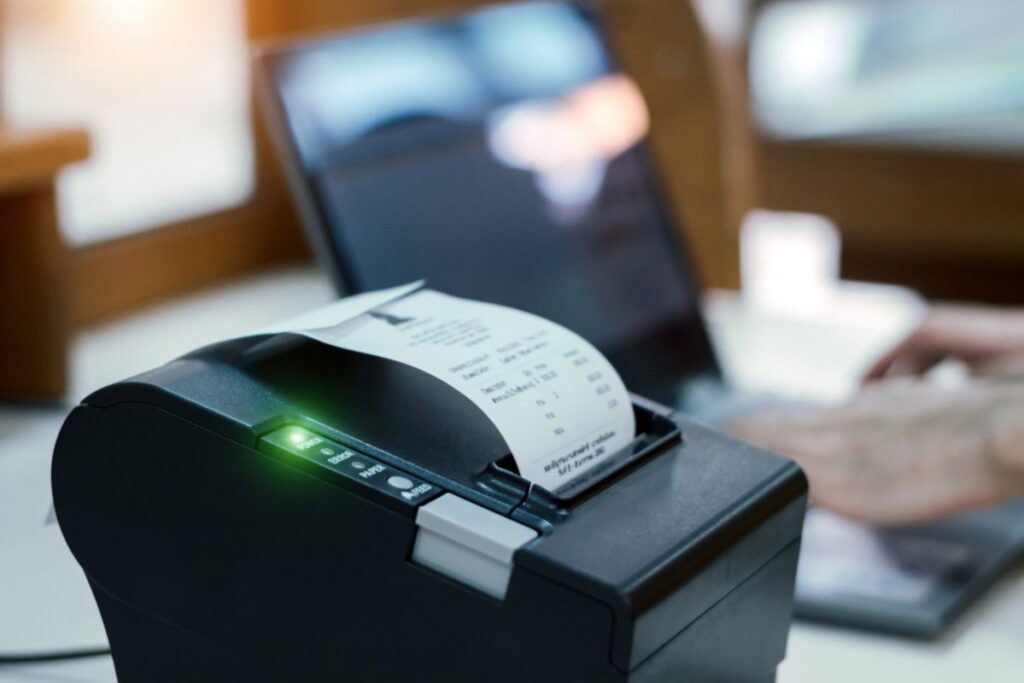
Avoid touching thermal receipts to take care of your health. Credit: Sunshine Studio, Shutterstock
Just 10 seconds of contact with these toxic receipts could expose you to hormone-disrupting chemicals.
A U.S. health watchdog has launched legal action against 32 major retailers after discovering dangerously high levels of a harmful chemical in their receipt paper. According to a press release by the Centre for Environmental Health (CEH), just 10 seconds of touching one receipt could expose you to more than the safe limit of Bisphenol S (BPS) – a toxic chemical linked to hormone disruption, reproductive harm, and even cancer.
Major high street names named in toxic receipt scandal
The lawsuit targets many familiar names, including:
- Burger King
- GAP
- Claire’s
- Forever 21
- Subway
- The Cheesecake Factory
- Office Depot
- Staples
- GameStop
- Peet’s Coffee, and more
The CEH alleges these companies violated California’s Proposition 65, which requires clear warnings when products contain chemicals known to cause reproductive harm or cancer.
What are BPS and BPA, and why are they dangerous?
Bisphenol S (BPS) is a chemical used in thermal paper, often as a replacement for BPA. BPA stands for Bisphenol A – it’s an industrial chemical that has been used to make certain plastics and resins since the 1950s and is also harmful to human health. BPA can act like a hormone, disrupting the normal function of the endocrine system, which regulates growth, development, and other vital processes. Some studies suggest a link between BPA exposure and increased risk of certain conditions, including heart problems, diabetes, and even certain cancers.
The European Union (EU) banned the use of Bisphenol A (BPA) in thermal paper for receipts in January 2020. This ban was put in place to protect the health of pregnant cashiers and reduce overall population exposure to BPA.
While marketed as a “safer alternative,” BPS has been shown to mimic oestrogen, interfere with hormone balance, and affect metabolism, child development, and fertility.
“Touching only one receipt with BPS for 10 seconds resulted in exposure above the safe harbour level,” says Mihir Vohra, Science Lead at CEH.
What is a thermal receipt, and how can you spot one?
Thermal receipts are printed using heat-sensitive paper. These are the receipts you get from supermarkets, fast-food chains, ATMs, and card machines, mainly in the US, Japan, and Korea, but also Europe. You can usually tell a thermal receipt by its glossy or smooth texture, black or grey text that fades over time, and turning black when scratched.
Unlike standard paper receipts, thermal paper contains coated chemicals that react to heat during printing – BPS is one of those reactive chemicals.
Toxic thermal receipts pose serious health risks for both workers and shoppers
Retail staff who handle hundreds of receipts a day are especially at risk. CEH warns against using alcohol-based hand sanitisers before handling receipts, as this increases chemical absorption through the skin.
“Receipts are made from thermal paper which shouldn’t be recycled because they contain bisphenols… that can contaminate the recycling stream,” says Shakoora Azimi-Gaylon, CEH’s Senior Director of Toxic Exposures.
How to avoid toxic thermal receipts
- Say no to printed receipts when possible
- Choose digital receipts if available
- Don’t touch receipts after using hand sanitiser
- Retail staff should wear gloves when handling them
- Do not recycle thermal receipts – bin them to prevent contamination
Switzerland’s ban on BPA and BPS in thermal receipts
Switzerland banned both BPA and BPS in thermal papers in December 2020, but recent research shows that compliance has been mixed. According to a 2023 study published in Regulatory Toxicology and Pharmacology, BPA use in receipts dropped sharply from 82.2 per cent to just 10.8 per cent between 2013 and 2021. However, BPS usage rose from 3.1 per cent to 19.1 per cent over the same period – despite the ban. Researchers noted that Pergafast® 201 (PF201) has become the most common replacement chemical in Swiss receipts, accounting for 60.3 per cent of thermal papers tested. Encouragingly, PF201 is not known to penetrate the skin and hasn’t shown any endocrine-disrupting effects so far, though researchers stress that more data is required.
Europe’s chemical crisis
A ban on BPA and other bisphenols in food contact materials across the EU took effect in January 2025.
However, a recent report found a record number of banned chemicals in EU goods, from clothing and toys to electronics. Despite regulations, unsafe substances continue to appear on shelves – often via imports or poor oversight.
View all health and beauty articles.







